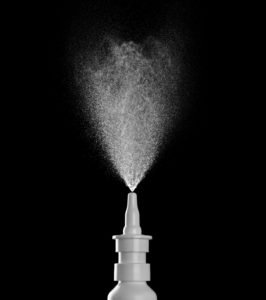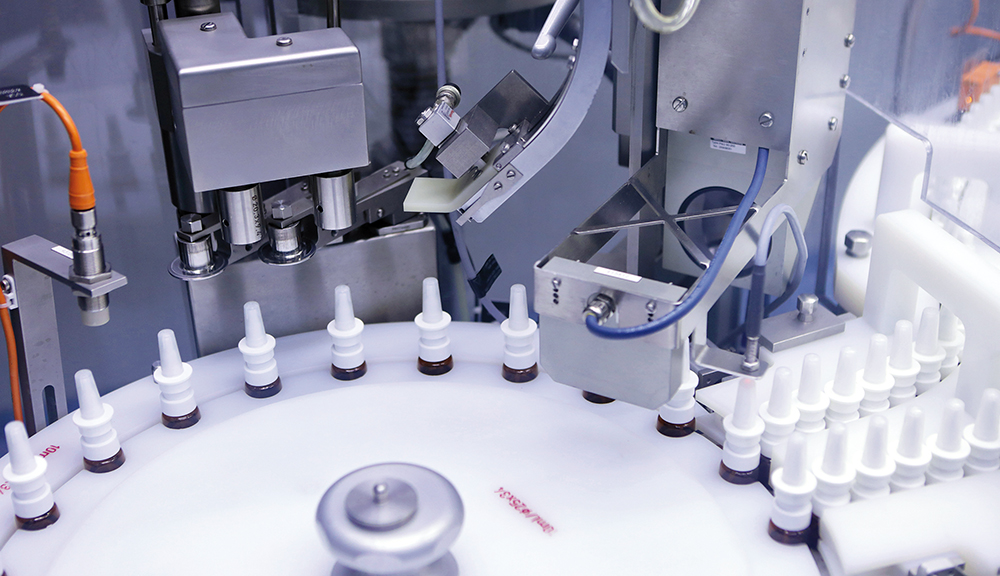To Issue 158
Citation: Kaneps E, “The Path to Nasal Drug Product Commercialisation”. ONdrugDelivery, Issue 158 (Apr 2024), pp 86–88.
Eric Kaneps discusses the benefits of nasal drug delivery compared with other administration routes – and the challenges in R&D and clinical manufacturing.
“The emergence of more research studies and clinical data has increased the understanding of nasal drug delivery, opening it up to different types of drug products.”
Offering non-invasive delivery and ease of use, fast onset of action and improvements in bioavailability, nasal administration is experiencing increased demand across many different indications. The nasal drug delivery market was worth US$19 billion (£15 billion) in 2022, according to Clearview Healthcare Partners, and is expected to reach $30 billion by 2030. Nasal administration is a promising delivery route for formulations containing new chemical entities (NCEs) and also the repositioning of already approved therapies through the 505(b)(2) regulatory pathway.
Although nasal administration has the potential to deliver innovative products, challenges remain in nasal product R&D and clinical manufacturing. The pharmaceutical industry must address these challenges, building the foundation for product scaling and commercialisation and unlocking the full potential of nasal drug delivery.
WHAT CAN BE ACHIEVED WITH NASAL DRUG DELIVERY?
The emergence of more research studies and clinical data has increased the understanding of nasal drug delivery, opening it up to different types of drug products.1 This has transformed it from an administration route predominantly used in local treatments for rhinitis and decongestion to a delivery method explored across many different applications. Intranasal delivery is now being explored in Parkinson’s rigidity, migraine, panic attacks, Alzheimer’s disease, multiple sclerosis attacks and cardiovascular events.2
The advantages of nasal drug delivery compared with other administration routes include:
- Rapid delivery, both locally and systemically: Nasal administration offers a rapid onset of action for both local and systemic delivery. Acting locally, drugs can be delivered directly to the brain from the nasal cavity. As it is highly vascularised and rich in immune cell populations, the nasal mucosa can also help with rapid delivery and high systemic availability.3 Nasal drug delivery avoids first-pass metabolism as it bypasses the liver, which allows drug products to be absorbed directly into the systemic circulation and increases bioavailability.3 In the example of inhaled vaccines, the increased numbers of immune cells result in a rapid immune response and quick onset of action.
- Non-invasive and easy-to-use self-administration: An improved patient experience is one of the main benefits of nasal drug delivery. Nasal products are relatively easy to administer and the delivery route through the nasal cavity offers non-invasive administration. Both of these aspects mean that nasal drug delivery can offer non-invasive and easy-to-use self-administration, an advantage over other administration routes, such as injection.
- Reformulation of existing drug products: Aside from the formulation of NCEs, nasal drug delivery is also being explored for the repositioning of approved therapies with reformulation through the 505(b)(2) regulatory pathway. Repositioning has the potential to expand applications of drugs already on the market, while also delivering the additional benefits of nasal administration. Emergency injectable drugs and vaccines are examples of therapy types that could benefit from reformulation.
Nasal drug delivery is also being explored for the treatment of mental health disorders, such as depression, anxiety and schizophrenia, where it can provide local administration by directly targeting the brain through the nasal cavity. Mental health treatments can often include controlled substances, which means that nasal drug developers and the final products require Drug Enforcement Administration (DEA) compliance.
“The final design of nasal drug products needs to be taken into account during R&D and formulation development.”
Drug developers are increasingly investing in nasal drug delivery, choosing it as an administration route over oral or parenteral routes more often. However, challenges remain in nasal drug delivery R&D and clinical manufacturing that pharmaceutical companies first need to navigate to deliver the full potential of nasal administration. Specifically, nasal drug developers must overcome device and formulation challenges, ensure flexibility in clinical manufacturing and scale products to meet demand on the path to commercialisation.
NASAL DRUG PRODUCT R&D AND FORMULATION
Step 1 to Commercial Success

Figure 1: It is important to understand what could affect how readily the formulation atomises when it is released from the device.
As they are drug/device combinations, the final design of nasal drug products needs to be taken into account during R&D and formulation development. Nasal drug products use a spray to deliver the formulation into the nasal cavity and onto the site of action. This creates challenges in the R&D of nasal products. Both the spray device-drug formulation interactions and the formulation of the APIs themselves need to be considered. Ensuring that both the formulation and the spray device work together in combination is essential to produce a safe and effective final product.
To help ensure the safety and effectiveness of the final product, nasal drug developers should aim to perform all product development studies at the same time during R&D. Studies are required to gain insight into pre-formulation and formulation development, nasal spray device selection and spray method development. Specifically, a thorough understanding of the physicochemical properties of the API and the parameters that could affect how readily the formulation atomises when it is released from the device (including viscosity, surface tension and density) helps developers understand how the final drug product will perform (Figure 1).
Nasal product developers are increasingly turning to CDMOs to help overcome the formulation challenges in R&D. Outsourcing to CDMOs can help to streamline R&D by performing pre-formulation, formulation, nasal spray selection and spray method development studies in unison, at the same site.
The formulation activities that developers need to perform in nasal product R&D include:
- Solution development: Determining the solubility of the drug substance and the choice of aqueous suspension, hydro-alcoholic or co-solvent formulations, or non-aqueous systems.
- Excipient selection: Selecting the appropriate excipients and preservatives required to produce stable and effective formulations.
- Dose development: Defining the number of doses of the formulation that can be delivered per final device.
- Spray characteristic development: Priming, pump delivery, droplet size distribution and spray pattern, which could affect the performance of the final product.
Step 2: Overcoming Bioavailability and Solubility Issues in New APIs
Although nasal administration avoids first-pass metabolism, a growing number of APIs in development have poor solubility, creating a challenge for bioavailability that must be overcome.4 Adding excipients to formulations can help with solubility and bioavailability, increasing the stability and shelf life of the final drug product. However, it can be challenging to determine the most appropriate excipients to add to a formulation.
Excipients that act as penetration enhancers or muco-adhesives can increase the contact and residence times of liquid nasal sprays in the nasal cavity, thereby enhancing permeability and increasing absorption. However, as APIs continue to increase in complexity, the choice of excipients becomes more challenging. Increasingly, novel excipients are being explored to help with more complex APIs, but developers need to ensure that excipients are safe, high quality and regulatory compliant, which is more challenging for novel excipients as they have not been used previously.
“Drug developers need to carefully consider how R&D and clinical manufacturing can impact product scaling and commercialisation.”
Step 3: Ensuring Flexibility in Clinical Manufacturing
After drug developers have navigated the challenges in nasal product R&D, the next step on the journey to commercialisation is successfully navigating clinical manufacturing (Figure 2). The main challenge in clinical manufacturing is having the flexibility to meet the demands of the product. The clinical manufacturing needs of nasal spray products vary depending on the scale and scope of the project but generally include:
- Adapting to small and large batch size demands
- Preventing product wastage with limited API supplies
- Manufacturing with different devices and containers
- Sticking to stringent product development timelines
- Handling controlled substances.

Figure 2: Successfully navigating clinical manufacturing is crucial.
Partnerships with nasal expert CDMOs can provide the flexibility required for successful clinical manufacturing. By investing in cutting-edge technologies and carefully designing manufacturing facilities, CDMOs can help to support the unique clinical manufacturing needs of nasal products. Dedicated clinical manufacturing and multiple lines can help to prevent delays and support unit dose, bidose and multidose nasal spray formulation, filling and assembly. Other flexible clinical manufacturing services include DEA Class I–V storage, quality control and analytical testing, and cold chain storage capabilities. Updates to facilities and processes, along with increasing nasal product knowledge, also help to ensure that CDMOs can provide long-term support to nasal drug delivery developers.
Step 4: Scaling Products, Regulatory Compliance and Commercial Success
Successful R&D and clinical manufacturing build a solid foundation for the scaling of nasal drug products and commercialisation in the future. Drug developers need to carefully consider how R&D and clinical manufacturing can impact product scaling and commercialisation. Taking a proactive approach to solving challenges early in product development, and partnering with CDMOs when necessary, can help to ensure success. Compliance with stringent regulatory guidance is a critical part of product scaling and commercialisation, ensuring the quality of the product on the journey to clinic and beyond. Nasal drug products need to comply with evolving regulatory standards, with a focus on safety that will also accelerate the path to commercialisation.
Partnerships with CDMOs can provide valuable insights, the services and capabilities required for R&D, the flexibility to navigate clinical manufacturing and support when scaling products for commercialisation. Bringing services together all under one roof helps with communication and collaboration, streamlining the approach to overcoming challenges. Ultimately, succeeding in R&D and clinical manufacturing helps to successfully develop innovative nasal drug products and deliver them to the patients who need them.
REFERENCES
- Vargason AM, Anselmo AC, Mitragotri S, “The evolution of commercial drug delivery technologies”. Nature Biomed Eng, 2021, Vol 5(9), pp 951–967.
- Touitou E, Illum L, “Nasal drug delivery”. Drug Deliv Transl Res, 2013, Vol 3(1), pp 1–3.
- Lim ST et al, “Physiological factors affecting nasal drug delivery” in “Enhancement in drug delivery” (Touitou E, Barry BW, eds). CRC Press, 2007.
- “CPHI experts: 90% of current pipeline APIs are poorly soluble”. GlobalData Healthcare, May 10, 2018.
Previous article
EXPLORING THE POTENTIAL OF NEBULISED BIOLOGICSNext article
HOW TO CHOOSE THE RIGHT INTRANASAL VACCINE DEVICE
